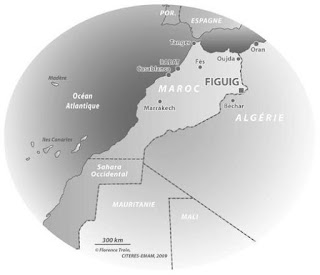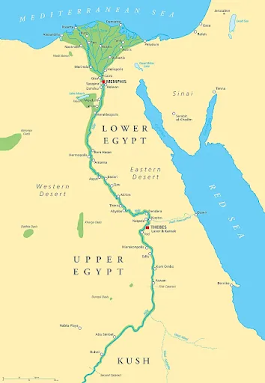Blog 5 - Morocco and Algeria: The Politics of the Figuig Oasis
 |
| Figuig Oasis |
The Figuig oasis and El Arja represent an important source of water and agriculture for the habitant of the region while also representing important territorial stakes for both Morocco and Algeria. This case shows how water resources in an arid region can become a stake in a wider political agenda. According to Janati (2021), oases are a particularly rare and precious resource in the desert area. They are a unique agroecosystem created in areas where irrigation derives from rivers (Janati 2021). The Figuig oasis is in the oriental region, on the border of Morocco and Algeria. It is isolated in between seven qsur or palaces east of Jebel Crouz (Atlas Mountain) (Madani 2006). Water in the Figuig oasis is unevenly spread through the territory which has made the date palm crop plantation to be divided into two main plains, one is where to qsur are located and the other one is the Zenaga and Hammam Tahtani plain. The Zenaga plain holds half of the water resources of the area which come from groundwater galleries (Madani 2006). It is because of the water resources present in the small zone of the Saharan desert that population and palaces emerged (Madani 2006). For the population living from oases, agriculture is the main source of income. Oases in the Saharan or pre-Saharan region are mainly used for date palm crop plantation because these crops are resistant to extreme arid climates (Janati 2021).
On 18 March 2021, Algeria’s expulsion notices from the El Arja zone to the Moroccan farmers of the Figuig oasis. According to the official border, the Figuig oasis would belong to Morocco and El Arja to Algeria, however, Moroccan farmers of Figuig have been present in this complex border for generations and have been using El Arja land as an extension for their plantation. Over 30 families of Moroccan farmers are concerned by the expulsion of over 1500 hectares of the El Arja extension. According to one of the Figuig farmers, the individual plantation was worth MDH5 million (€500 000) and a kilo of dates can be sold MDH150 (€15). The expulsion from the El Arja enclave is important despite the farmer still being able to use a side of the Figuig Oasis because El Arja holds the production of rare ‘Aziza’ dates only produced in that soil. If farmers were to stop the exportation of the Aziza date this would cause an important decrease in their revenue. Date palm production and exportation can contribute to up to 40 to 60% of the agricultural income. In the case of Figuig and El Arja, the agricultural income from date palm production is the only source of income for the family of this oasis (Janati 2021). This risk fostered important movement of protestation around the region. Over 4000 Moroccan farmers gathered on the Moroccan border side to protest their expulsion which represent half of the Figuig population. Protesters are claiming that despite El Arja's attribution to Algeria, farmers have been present for generations on the territory in which they have been taken care of and have established all their agricultures.
Officially, Algeria is justifying the expulsion by alleged drug traffic networks through the enclave. However, the Figuig farmers denied any illegal traffic, and this isn’t the first attempt of Algeria to deny access to the land to Moroccan farmers. Indeed, a similar expulsion procedure was engaged in 1975 after an escalation of the tensions between Morocco and Algeria on the Sahara. In December 2020, the former president of the U.S Donald Trump official recognized the Moroccan sovereignty over Sahara which was later backed by current President Biden. The U.S recognizes Morocco presents an important shift the international politics over Sahar as Algeria is fervently opposed to Morocco's sovereignty and fears that the support of an important power may play in its disfavour. While both will want to avoid an inter-state war, shared water resources are an important stake for the population of this area and both countries which as we have seen can be cause for an escalation of tension (Madani 2006; Torrens 2012).



Comments
Post a Comment